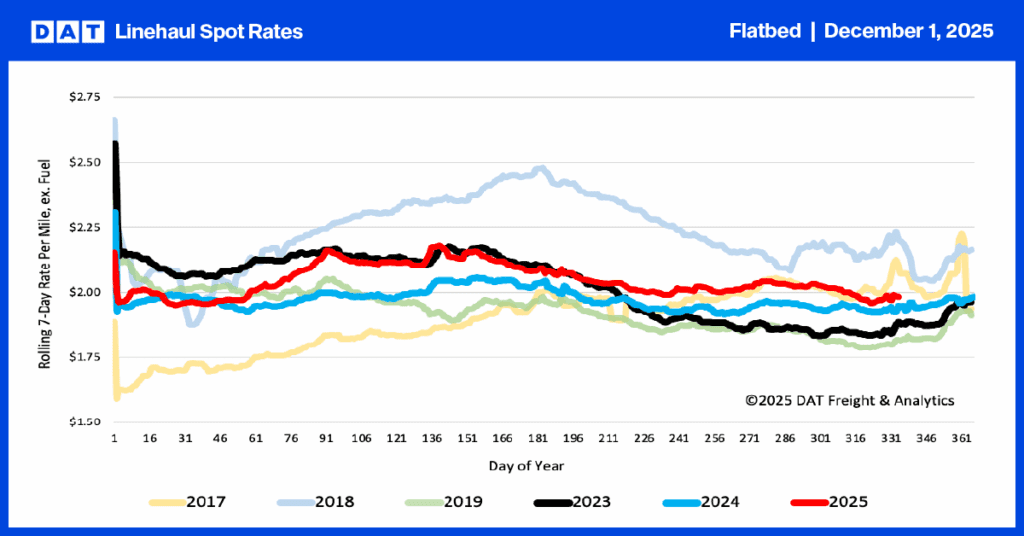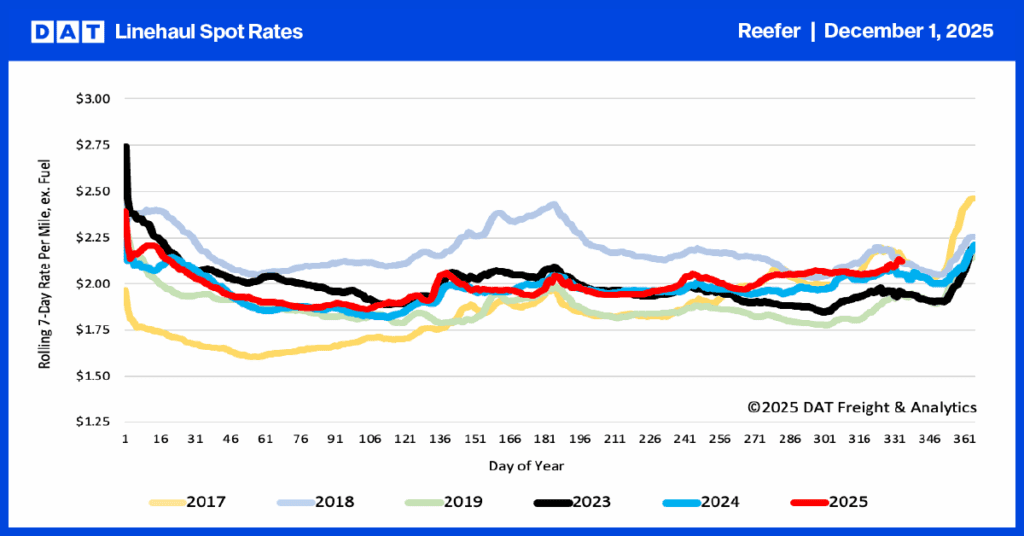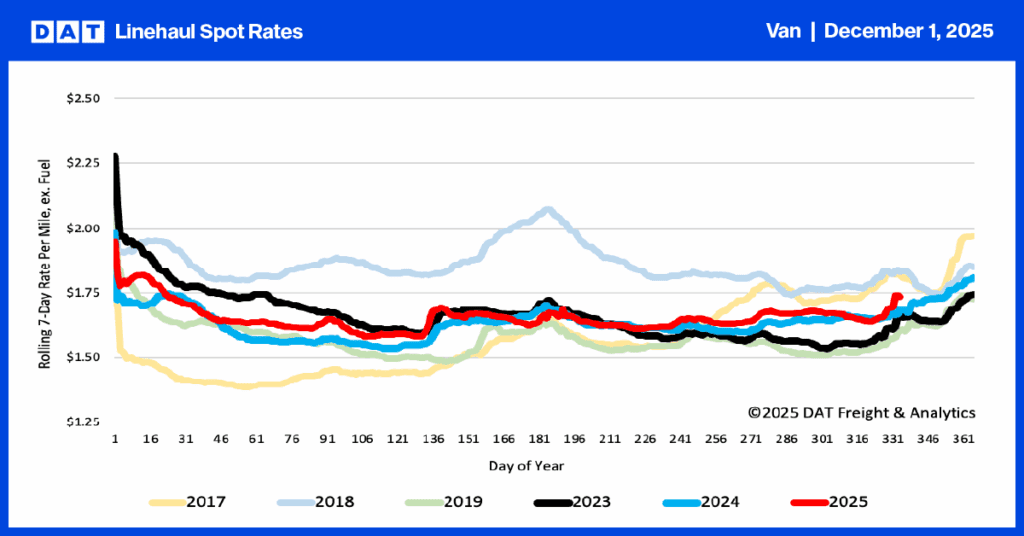On a recent DAT Freight & Analytics show, we interviewed former owner-operator and industry expert Adam Wingfield from Innovative Logistics Group to discuss strategies carriers use to survive the soft freight market.
Question of The Week: What should carriers do when brokers have turned them down for loads because they don’t have enough inspection data with the FMCSA?
Adam Wingfield (AW): We often hear drivers taking themselves off the road during specific CVSA inspection periods like International Roadcheck Week. Firstly, carriers should understand that because of the direction that the overall industry is heading, whether we like it or not, it’s directed towards doing more to stop fraud. Secondly, they’re trying to stop double brokering, and what that roadside inspection does is it creates a data point that assures the broker that there’s an actual asset on the highway.
So instead of pulling yourself out of those areas when inspection weeks are on, ensure the pre-trip inspection is completed and that your equipment is correct; you have to run your trucks in those lanes where the inspections occur. They’re often the major freight lanes. You must stop bypassing because when you do that, you limit the brokers you can operate with. Your inspection history can turn into your best asset.
Dean Croke (DC): We have record-high temperatures across the country this week; what advice would you give carriers in power-only fleets where they have to haul from the trailer pool?
AW: It all comes back to the pre-trip inspection. I know it sounds redundant, but you must make sure the trailer is prepared to hit the highway, and that comes from not just tapping tires with a hammer. You’ve got to take that extra step to check the air pressure with a tire gauge. When you’re pulling trailers in trailer pools, you have to make sure because, at the end of the day, when you hook up to that trailer, it’s yours whether or not you own it or not. It’s your job to ensure the trailer is in a safe condition.
DC: What would you tell a young Adam Wingfield today as he plans to enter the trucking business?
AW: The very first thing is you’ve got to plan to live on the road and visit home. I see a lot of folks when they shift to being an owner-operator from a company driver; they want to be home every two days of the week or be home weekly. And sometimes, that doesn’t bode well with your business model. You must first look at the business model to be an owner-operator and make money. You must do the math sometimes and stay out a little longer.
The second biggest piece of advice that I would give myself is to do business first. Looking back at it, I made some critical mistakes in the beginning that were very costly. I didn’t work enough on the business side of being in business. We’re not talking about anything complex here, but being able to read a P&L, the price of a load, break down your break-even costs and know when you’re operating profitably.
The full interview can be found here.


